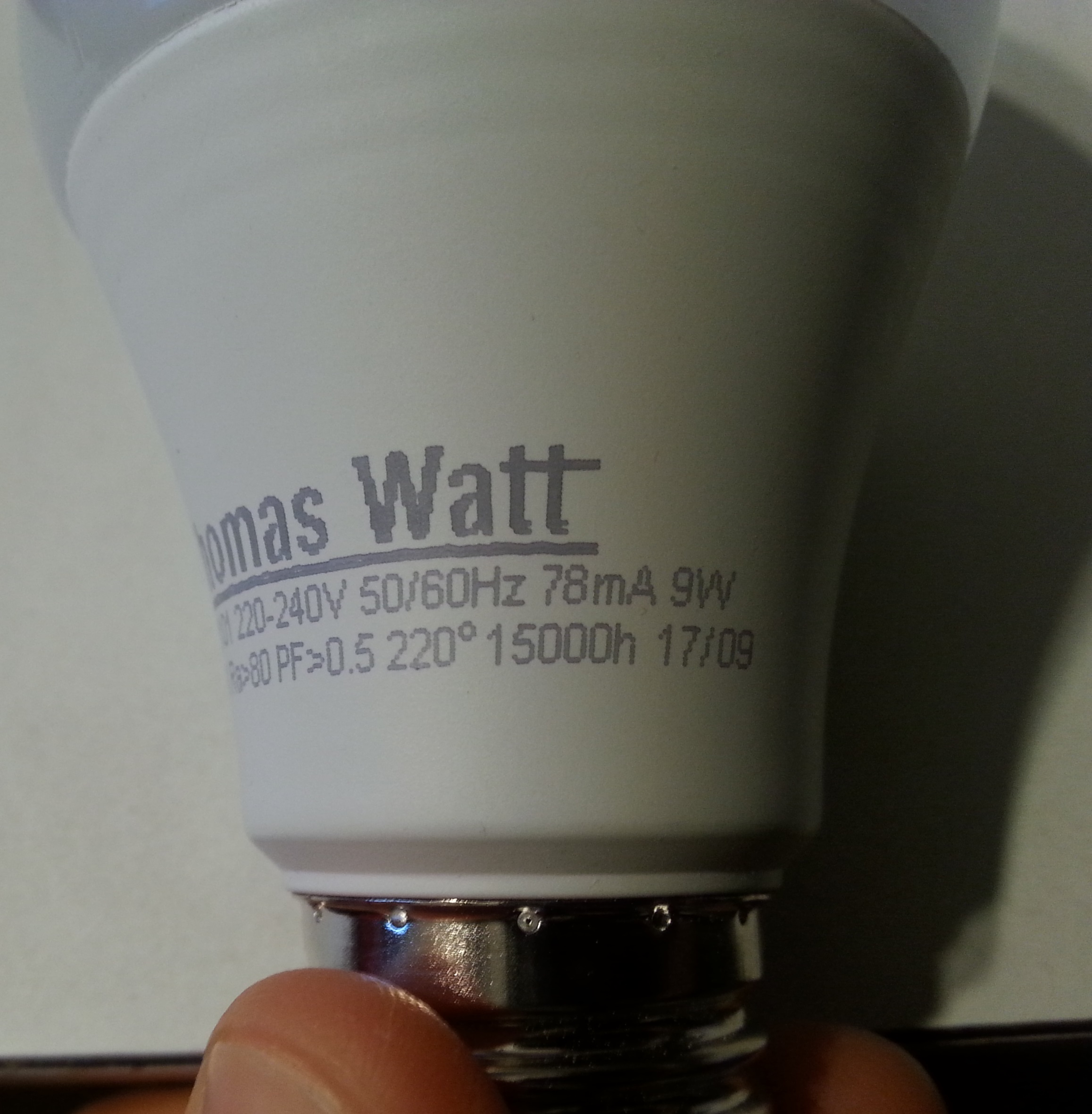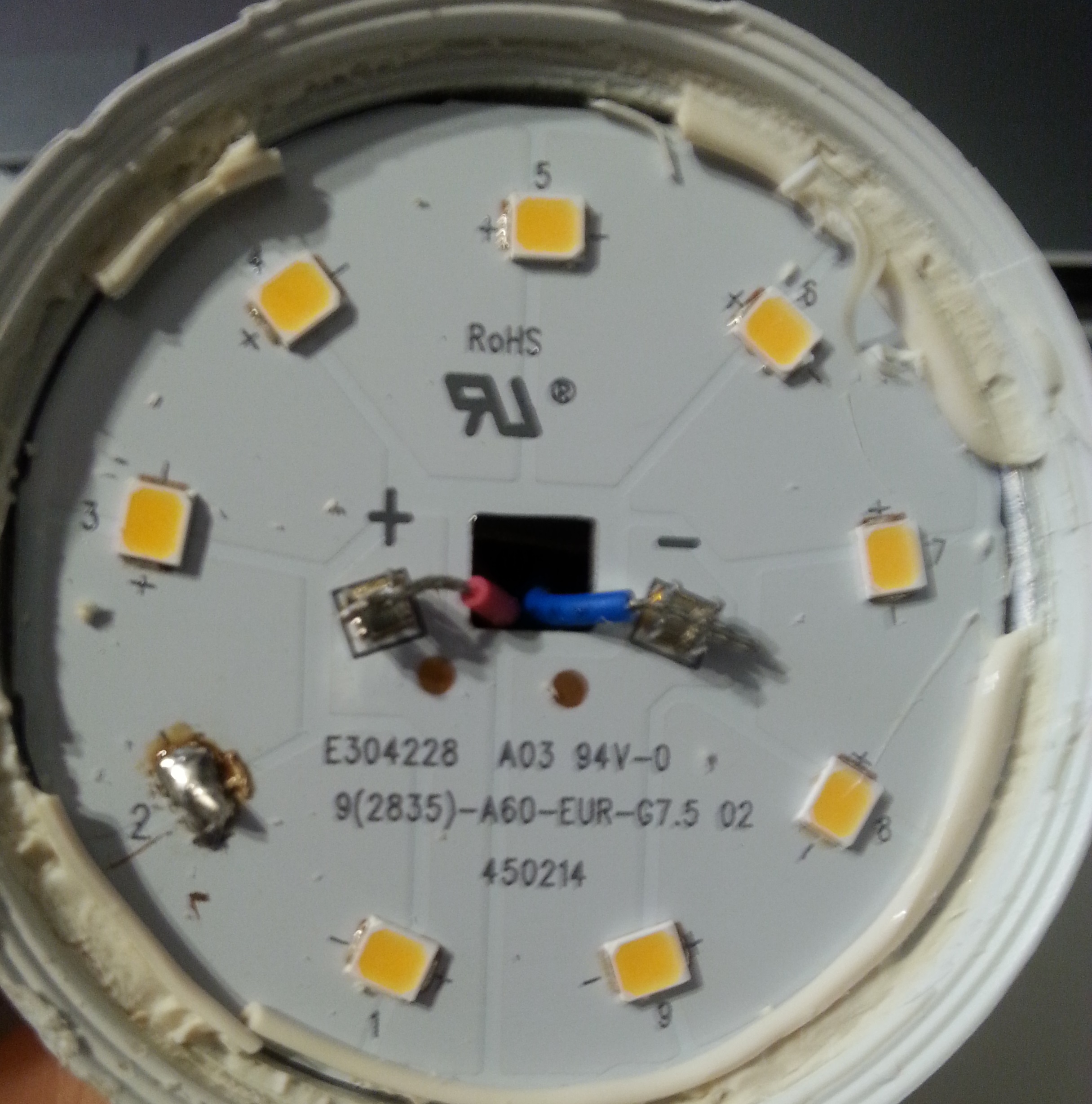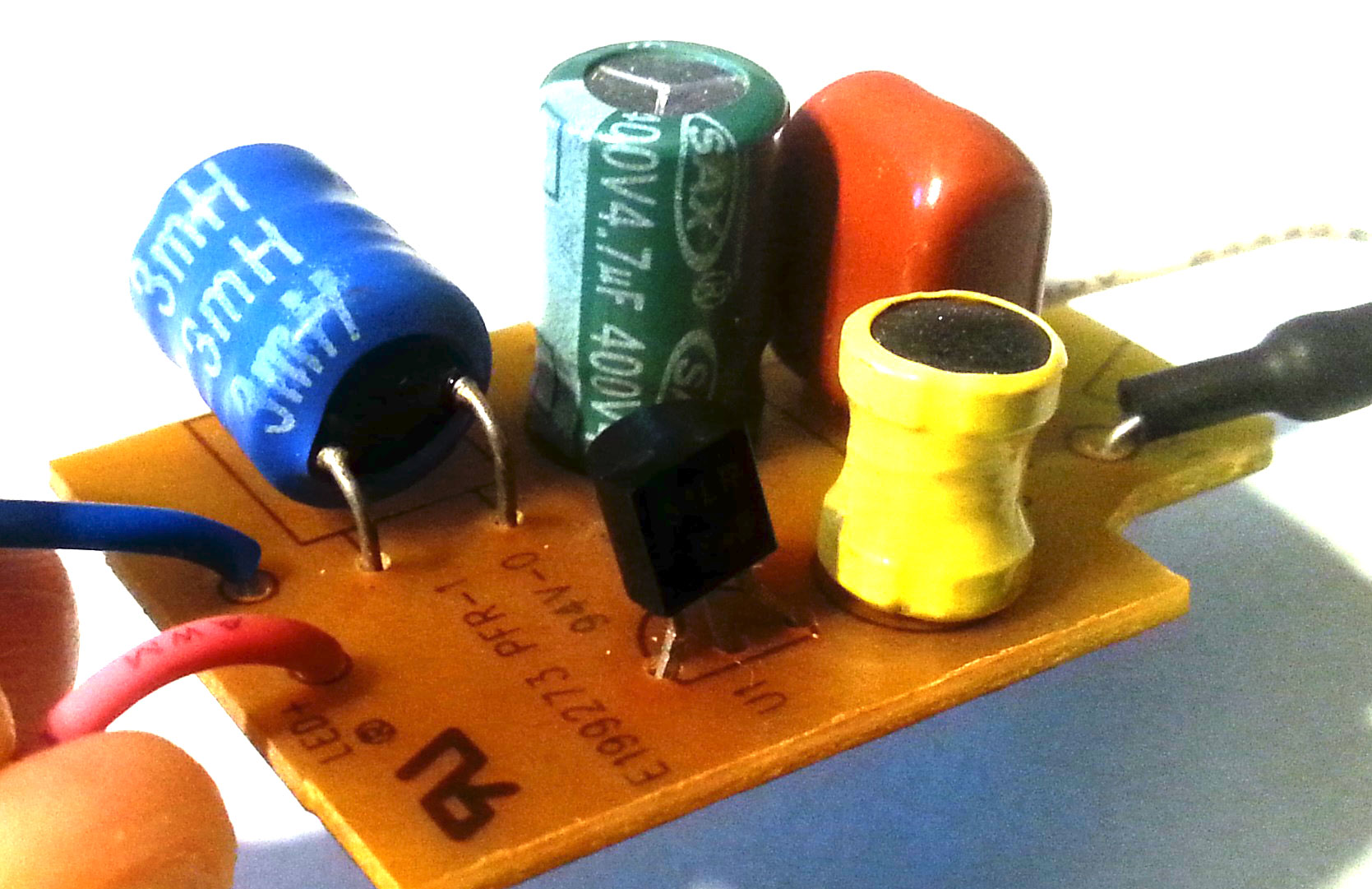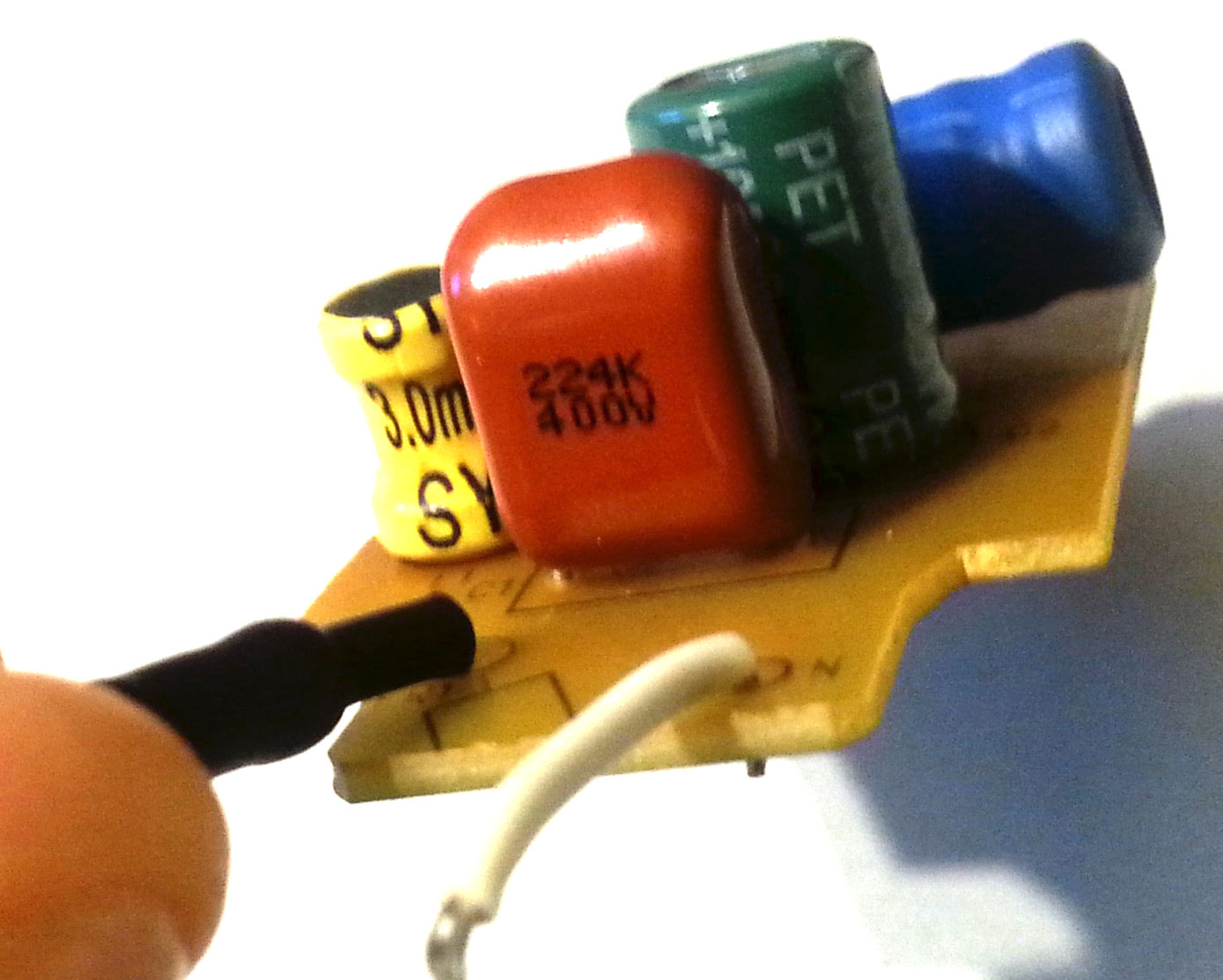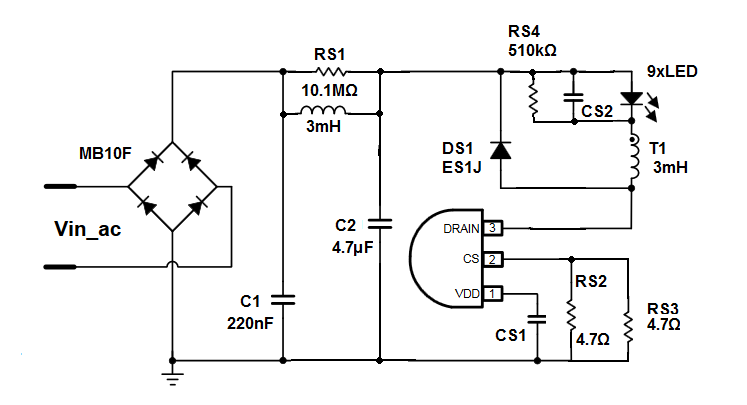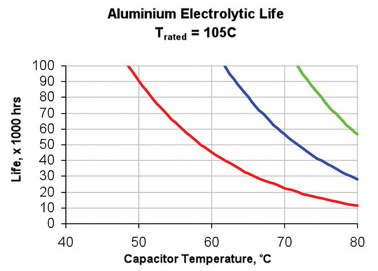I bought 10 Thomas Watt LED bulbs and 8 are dead in less than a year (each last about 2-3 months). Soometimes a couple of days before they stop working, they flicker when I switch them on or after they are warm.
I have open some of the bulbs and for some of them, I saw a little black dot on one or two LEDs. I removed the LEDs and solder the connections (cf the picture). After this repair, the LED bulb works for a while and then stop working again.
On a forum someone having similar LED light bulb wrote that the LEDs get twice the current that they are supposed to get. Is this my problem? How can I solve this?
On the "SMD side" of the PCB:
- DB1 (right) is a brigde rectifier (MB10F)
- DS1 (top left) is apparently a Fast / Ultrafast Diode (ES1J)
- the resistor: RS1 (1045)= 10.1mΩ, RS2 and 3 (4870) = 487Ω, RS4(514) = 510kΩ
On the "DIP side" of the PCB:
- U1= 51LP F45

